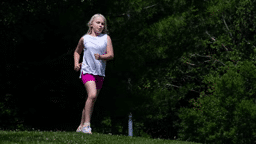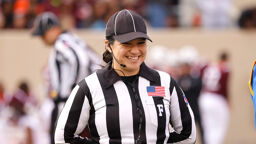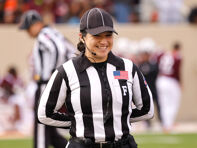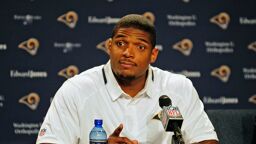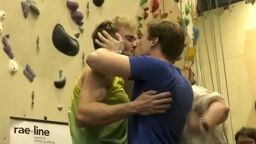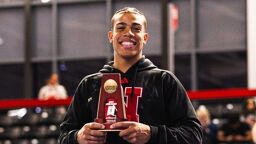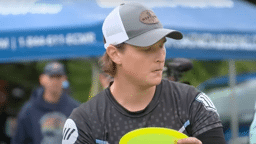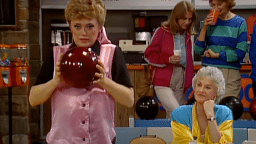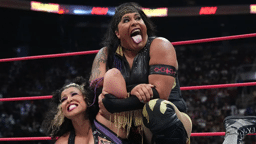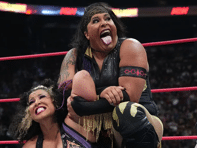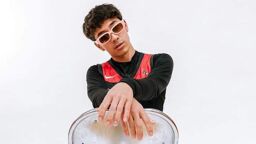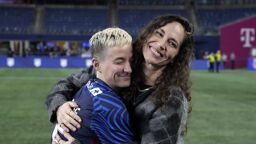This week, Outsports is joining SB Nation in celebrating as well as deriding the sports jerseys, uniforms and kits that have made us proud, embarrassed and given us reasons to wonder, “what on earth were you thinking?” Today, contributor Karleigh Webb explains why her favorite jersey of all time promoted the 7-Eleven convenience store chain.
As a kid, the thing I liked most about sports was the jersey. The colors. The logo. The number on your back. The name on the front, which is more important than the one on the back.
There is a sense of belonging that comes with a jersey. A spirit of being a part of something that is bigger than you. A spirit that it's just you, your mates, and your collective fight against the world.
My favorite jersey is a symbol of that scrap and spirit. The 7-Eleven Cycling Team, splashed in orange and green, were the scrappy little American team that could. Starting in 1985, it was them against the world and they inspired a generation of competitors and fans in the U.S.

Act 1: Turning Pro
The team began with two American guys who had dreamed big and were dreaming bigger in 1981. Jim Ochowicz was Olympian cyclist-turned-team manager. In 1972, he was pedaling for Team USA at the Olympics in Munich. His partner and friend Eric Heiden was looking for his next challenge after a clean sweep of the men’s speed skating events at the 1980 Winter Olympics in Lake Placid. Together, they formed an amateur cycling team with sponsorship from the Dallas, Texas-based Southland Corporation, which is the parent company of the 7-Eleven convenience store chain.
By 1985, the team became a professional outfit. Heiden was joined by young standouts such as ‘84 Olympic road race gold medalist Alexi Grewal, and 1984 team time trial bronze medalists Davis Phinney and Ron Kiefel. Also among the team where two guys who are better known for their lives after racing bikes. Endurance coaching guru Chris Carmichael and popular television cycling commentator Bob Roll were both part of the team as they first headed over to take on the best of European tour cycling.
The new team got a big break with an invitation to the 1985 Giro d’Italia, one of the three “Grand Tour” events on the European cycling calendar. To bolster their effort, the team signed a Europe-based, up-and-coming American named Andrew Hampsten to a 30-day contract as well.

Many of cycling’s European old guard lightly regarded this American upstart, only the second U.S.-based team to contest a Grand Tour. The upstarts sent their message at the Giro. Kiefel launched a breakaway during the 15th stage to become the first American to win a stage of a Grand Tour. Hampsten, who was already on the radar of some of Europe’s top teams, rolled to win stage 20. His impressive effort throughout the entire tour caught the attention of the powerful French La Vie Claire team, led by 5-time Tour de France winner Bernard Hinault and Greg Lemond. Hampsten signed on to be on their side for 1986.
The group known as “Team Slurpee” was now on the cycling map. In ‘86, they accepted their next major invitation, this time to the biggest party in their sport.

Act 2: Tour de France, 1986
Heading into the 1986 Tour de France, American red, white and blue was getting a lot of attention. Greg LeMond was the odds-on favorite to win, and then become the first American to win a Grand Tour.
Team 7-Eleven with its blend of excitement, hope and inexperience was there, too. The American-based, mostly American-manned team was set to make the one-month run to Paris for the first time. The boys in orange and green wasted little time making their first impression in France.

At stage 2 of the tour, one of the two foreign riders on the team made a push. Canadian Alex Stieda pulled off a surprising charge to snatch the overall lead in the race. For the first time ever, the maillot jaune — the yellow jersey worn of the leader of the Tour de France — was on the back of a rider from North America.
On the same day, however, a difficult team time trial for 7-Eleven made the celebration short. A series of mechanical woes and crashes cost Stieda the overall lead. The next day the team’s fortunes bounced back, as Davis Phinney became the second American to win a stage of the Tour de France.
After Phinney’s triumph, the team spent the rest of that hot July just trying to survive. Half of the team, Phinney, Heiden, Alexi Grewal, Doug Shapiro, and Chris Carmichael were forced to abandon the race. Five of them made it to the finish along the Champs Elysees, led by Bob Roll, who was 63rd overall. Jeff Pierce finished 80th. Ron Kiefel was 96th. Mexico’s Raul Alcala was 114th, and Stieda, who was at the podium in yellow in the tour’s second day, finished 120th overall.

The next year, the team returned to competition smarter and stronger. Alcala was gaining notice as a top climber and possible future Grand Tour winner. He won the best young rider classification at the Tour de France in 1987 and took the overall win at the Coors Classic that year.

Hampsten returned to the team and he bagged Team 7-Eleven’s first overall stage race victory in Europe at the Tour of Switzerland. The next year, Hampsten would be at the front of perhaps 7-Eleven Cycling’s greatest defining moment.
Act 3: “The Day Strong Men Cried”
June 5, 1988. Chiesa, Italy. The day was rainy and cold, and the 7-Eleven’s team trainers were combing every ski shop in Chiesa to find hats, gloves and anything else that could keep their riders warm and on their bikes.
Stage 14 of the 1988 Giro d’Italia would be fought in a 75-mile drama where rain would become snow as the peloton crest Passo di Gavia in the Italian Alps. From there, race would make a slippery descent toward the finish in the town of Bormio.
Hampsten entered the day 5th overall, 1:10 behind the overall leader. What happened over the course of race couldn’t happen today, because of the International Cycle Union’s regulations in regard to extreme weather. In 1988, no weather was considered “too extreme” to race. The Giro organizers ignored those who said the stage should be canceled. The race was on.
At points in the stage, riders stopped as teams scrambled to get warm weather gear to the athletes so they could continue, while others crumbled under the wet and cold conditions. Italy’s leading sporting daily, La Gazzetta dello Sport, called the stage “The Day Strong Men Cried”.
Team 7-Eleven took control of the situation. Their foresight and planning paid off with Hampsten in a wool hat, a jacket, and diver’s gloves crunching through the snow at Passo di Gavia. His teammates all supporting their team leader with hot tea and grabbing the wet clothes he would shed throughout the stage as Hampsten pressed the advantage.
He disclosed his simple strategy for the harsh conditions years later to the Tour Divide website. “At this point the road was still paved, but when I came around a left-hand switchback and saw the road turn to dirt and the 16% sign, I punched it. I was definitely playing head games. I wanted the other riders to be afraid of both my strength and of the height of the climb.”

The photos of the snowy, perilous stage are cycling legend that show Hampsten gamely plowing through the snowy mountain passes and surviving the slick descent to Bormio. Only a late surge by Erik Bruekink prevented Hampsten from winning the stage, yet one of the grittiest rides in cycling history gave Hampsten the pink leaders’ jersey that he would never remove.
Andrew Hampsten became the first and still only American to win the Giro, and Team Slurpee won their first, and last, Grand Tour.
Epilogue: My Day In Green and Orange
The 7-Eleven banner never reached as lofty a perch again. After 1990, the sponsorship switched from convenience stores to communications as Motorola took over as lead sponsors and the team flew under a new name.
But to cyclists and fans, seeing “7-ELEVEN” in a green-orange blur of gears and chains raises eyebrows and brings back smiles and memories even after 30 years.
I saw that emotion up close. A few years ago, I bought a road bike second hand. It was a modernized replica of 7-Eleven cycling’s last mount, a Merckx Corsa. Last spring I spied a cycling outlet selling remakes of the old 7-Eleven jersey. I clicked “buy” immediately. I had to have one.

The stars aligned just in time for a local charity ride in Connecticut. I had no idea how much giddy and fun this ride would be.
For me it was 50 miles of smiles, thumbs up, “hey, nice bike!”, and “check out that jersey!”
It was also pedalling with thoughts of what I saw on TV screens back then. Seeing Hampsten leading a green-orange train to victory. I could hear Phil Liggett in my head with each pedal stroke.
Pushing up a New England hill morphed into visions of Raul Alcala mastering a mountain climb. Sprinting to the finish after 50 miles was grinding like Davis Phinney or Jeff Pierce in the final kilometer to win a stage.
For that morning and afternoon, I was them.
The sweetest part one of their number retweeted my joy in celebrating what they gave to the sport in this country, and how cool they looked doing it.

What are some of your favorite jerseys, iconic or forgotten? Share yours in the comments below!
